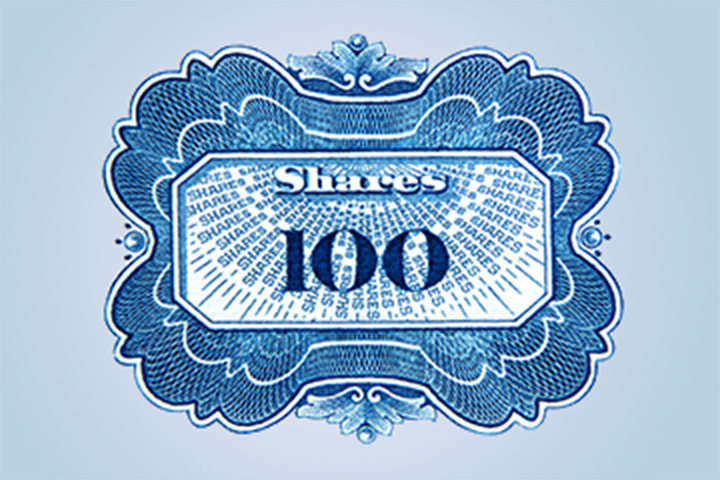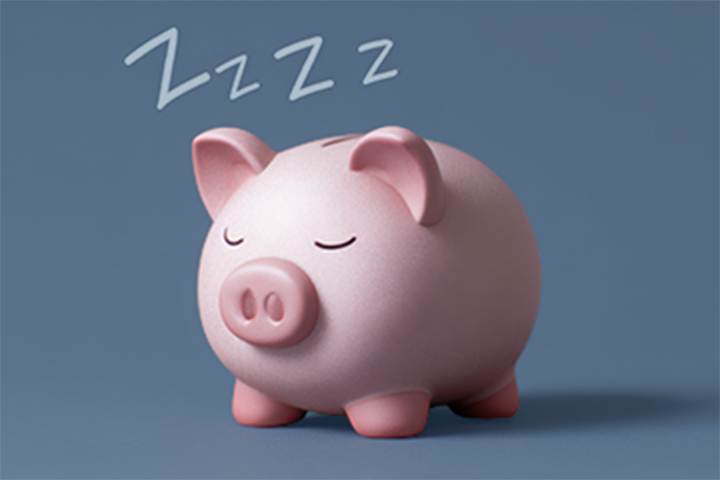Don’t try to catch a falling knife

Keytrade Bank
keytradebank.be
September 04, 2025
(updated October 17, 2025)
2 minutes to read
Some see a share that is quickly falling in value as a buying opportunity. Others see it as a warning sign. That is exactly what the stock market adage about not trying to catch a falling knife is about. Not an easy thing to do, both in a literal and figurative sense.
In layman's terms
Don't try to catch a falling knife is a well-known warning to investors:
- Don't impulsively buy a share that is experiencing a significant price decline.
- Wait until there are clear signs that the price is stabilising or recovering.
- Don't try to pick up bargains when no one knows whether the share has bottomed out.
In other words, think before you buy, because not every dip is an interesting opportunity. Sometimes it is actually the beginning of a prolonged decline.
Who said it first?
The expression first appeared in English literature in the early 20th century. However, on the stock market, this catchy quote became popular in the late 1980s, particularly on Wall Street.
The comparison with a falling knife is not random. Those who act too quickly may get hurt. Those who wait until the knife is on the ground remain unharmed. The metaphor has stuck ever since and has become a universal warning against impulsive investing.
Is that really how the stock markets operate?
Absolutely. Stock market history is littered with examples of shares that seemed cheap at the time, but whose decline turned out far greater in retrospect. Investors who were expecting the price to rise again and thought they were getting a bargain were left with heavy losses.
The psychological pitfall is clear: a sudden drop may look like a bargain, but without the context behind the decline, it remains a blind buy.
A shower of falling knives from the States
President Donald Trump's infamous – and now historic – tariffs shook the global economy to its core. One stock after another quickly fell into the red. In the United States alone, 6.6 trillion dollars in shares went up in smoke in just two days. Many stock market experts weighed in on the matter: was it the right time to buy or was it better to wait (a little longer)? That is the question that will arise time and time again during geopolitical turmoil.
Is it worth a try?
With good timing, the blade of a falling knife can land perfectly between your two hands without spilling a drop of blood. Are you going to go for it, or not?
| empty-header | empty-header |
|---|---|
Catch the knife | Don't catch the knife |
If you have a good sense of the context and your timing is perfect, this has the potential to yield a nice return. | You avoid investing in a company that is systematically making a loss. |
You develop your sixth sense to spot interesting stock market opportunities that others may miss. | You first learn to analyse the situation and not to act impulsively. This way, you invest in your growth as a rational investor. |
Expert insight: "A tough crisis? Why wait to invest?"
Pascal Paepen is a Banking & Stock Exchange lecturer at KU Leuven, teaches at Thomas More University of Applied Sciences and co-founded investor website Spaarvarkens.be. As a former banker, he now uses his expertise to help people make the transition to investing.
"The question that (novice) investors should ask themselves is this: is the share price of one particular company taking a big dive, or is the whole market falling? In late 2021 and early 2022, the stock market went into the red for months due to significant interest rate hikes. In such broader stock market phenomena, investors can safely enter a falling market if they do so in a gradual way. For example, they can set alerts and buy at -20%, -25% and -30%. History has taught us that even the biggest crises around those losses reach a turning point and gradually start climbing back up."
"Such a falling knife may be an indication that there is more going on at a corporate level, so it's best to analyse the situation first. Is there a risk of bankruptcy? Perhaps a critical contract fell through? But even then, perhaps one capital injection is enough to get things back on track. Context is therefore key, but I don't think waiting for the bottom to fall out is the solution. Don't be afraid to invest in turbulent times. A severe crisis situation may offer some excellent opportunities."
How one "njet" did it for Galapagos
Mechelen-based biotech company Galapagos experienced a huge slump on the stock market in 2020 after its main drug Jyseleca was not approved in the US. In just over a year, its share price fell from more than 230 euros to 50 euros.Some investors felt there was a bargain to be had. However, even now in 2025, Galapagos has still not recovered. Those who bought too early during its decline were left with a loss for a long time.
What should you bear in mind as an investor if you're just starting out?
A share that is falling sharply does not automatically guarantee a golden recovery. The following approach options may help you to avoid any pitfalls:
1. Always look for the reason behind the decline
Is the price drop the result of many people selling at the same time, or is there another cause? Has there been some bad news about the company, the sector or the wider economy? Look beyond just the price movements. And what can you learn from similar price movements in the past?
2. Wait for (subtle) signs of recovery
Is the price recovering? Look for signs such as a stabilising price movement, positive earnings figures or experts who suddenly express confidence in the company again.
3. Invest in phases
If you genuinely believe a recovery is on the way, but still want to exercise caution, buy your shares in smaller chunks, spread out over time. This will reduce the financial risk.
How Deliveroo stopped delivering on the stock exchange
During the coronavirus pandemic, food delivery drivers were welcome visitors to people's homes. For a long time, they were also pretty much the only visitors. Deliveroo's IPO in March 2021 was therefore eagerly anticipated. Not least because even back then, there were already many critical concerns about the company's business model.
It turned out to be an anticlimax. The share price plummeted immediately and, despite a brief rebound, continued to fall, especially from 2022 onwards. Those who bought too early after the fall were left with a very bitter pill to swallow. Those who waited to get in when the trend reversed in early 2023 did well, as the share price has been climbing steadily ever since.
From stock market wisdom to life wisdom
Don't try to catch a falling knife is one of the most visual stock market adages, and not without reason. Those who try to time the market based on gut feeling risk getting hurt. Waiting, analysing and only then buying often proves to be the safest choice.
Being patient does not have to mean being passive. In fact, it is quite the opposite: you need to actively wait for the right moment. Because just like in real life, a challenge or low point can mark the start of a new period of growth, if you approach it in the right way.


